The Kia Rio is one of those cars you don’t hear much about, but see heaps of them on the road. 2017 brings a refresh to the look and a better interior. This new fourth generation model also includes a bigger cabin and a longer wheelbase.
Will the Rio continue to win over buyers in this tough market segment?

The Range
You get to pick from one of three models for your Rio; LX, EX, or Limited.
The base LX has 6-speed manual as standard, at $22,490, with a 4-speed automatic option at $23,490. Rob Clubley tested the manual model out earlier this year. The LX has 15” alloys, black cloth interior, leather steering wheel, AC, keyless entry, DAB radio, DRLs, fog lights, a 7” colour touchscreen, single rear USB, front USB and AUX, and auto headlights. For the first time, the Rio now has Apple CarPlay and Android Auto capability as standard.
You also get a tilt/telescoping steering wheel – nice in this price range – as well as cruise control, and a 3.5” driver’s info display.
There’s some nice safety features for your money here too, including reversing sensors, a reversing camera with dynamic guidelines, Vehicle Stability Management, Straight Line Stability, Hill Start Assist, Cornering Brake Control, and 6 airbags.
The midrange, auto-only EX model ($25,490) takes the alloy wheels to 16”, and adds projector headlights, Smart Cornering Lights, LED tail lights, LED side indicators, electrically folding exterior mirrors, premium cloth interior, SatNav – including SUNA traffic alerts, keyless start, climate controlled AC, auto-dimming rear-view mirror, and automatic wipers.
The Limited model ($26,990) is auto-only as well, and ups the alloy wheel size to 17”, and includes LED DRLs, privacy glass, a leather composite interior, and alloy pedals. Drive Life tested the Limited model.
Seven colours are available, although pretty much standard fare; Clear White, Silky Silver, Platinum Graphite, Aurora Black Pearl, Urban Green and Smoke Blue, and the stunning Signal Red that our test car is finished in.
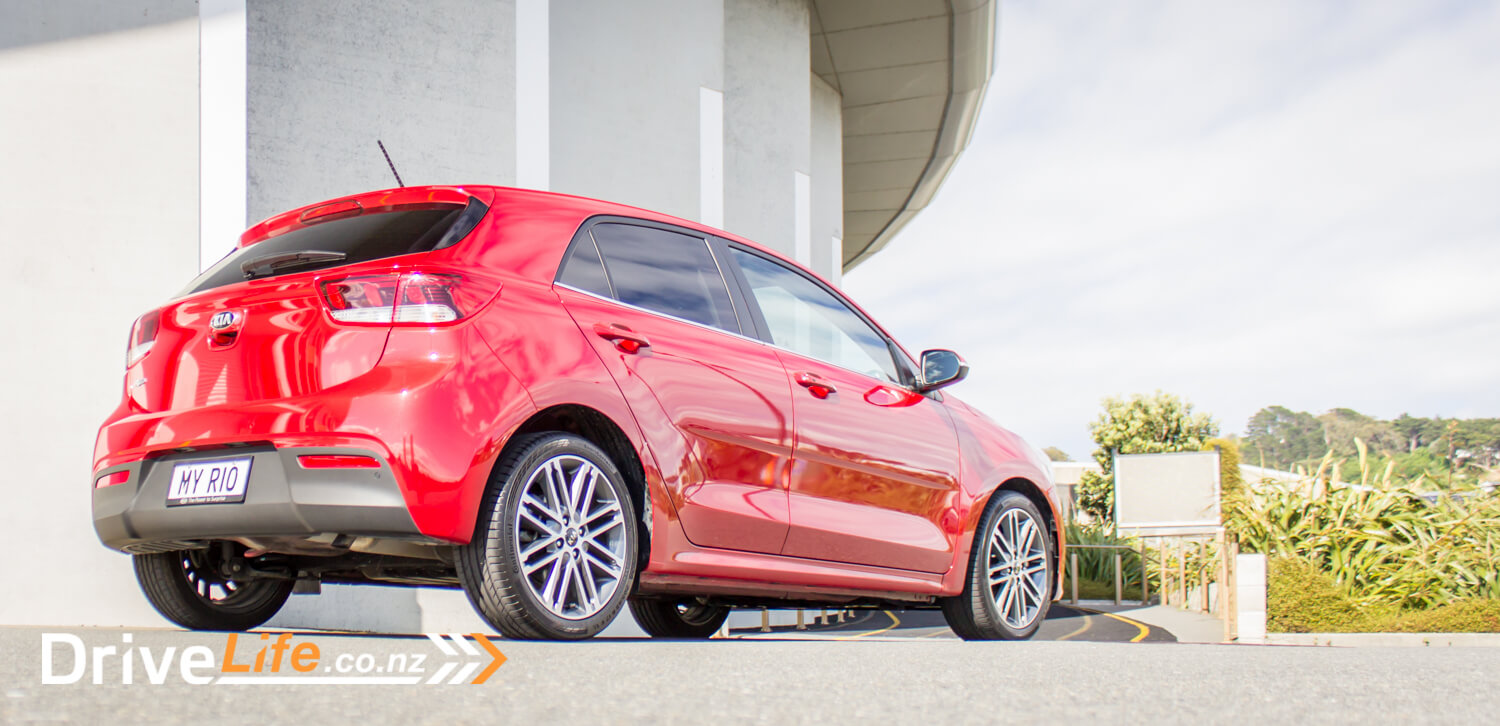
First Impressions
Okay, let’s be honest: this is a good-looking car. Although not that much different from the previous generation, Kia have managed to tweak the shape here and there, and the slightly longer and slightly lower stance really make for a great design. This was in no doubt helped by our test car’s Signal Red colour, it looks superb.
At certain angles, the Rio looks like a cross between a Golf and a Corolla but not in a bad way; from any side, it looks good – end of story.
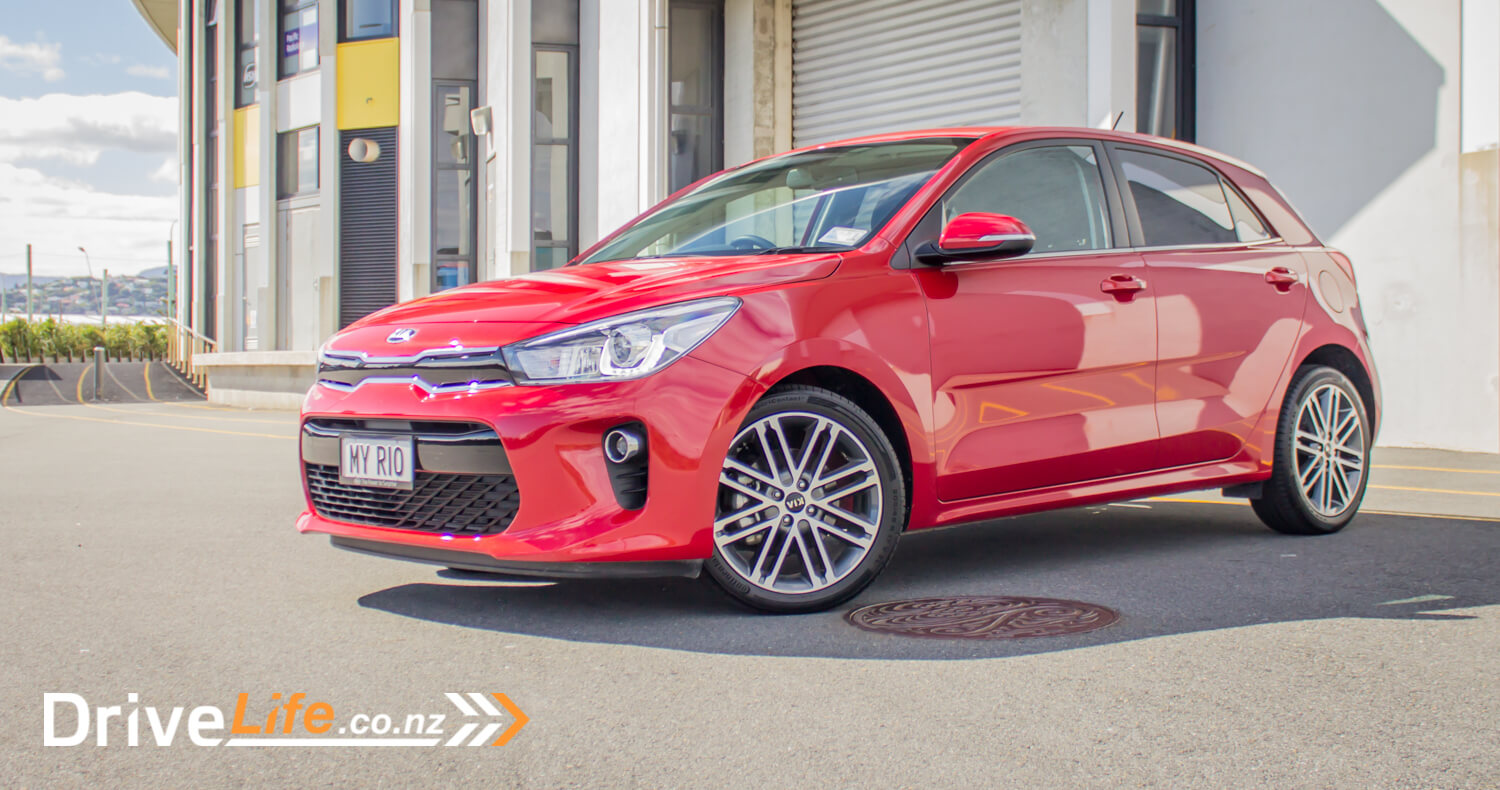
The Inside
The interior too looks pretty sharp and echoes that thing you often see with Kia; the great build quality. It’s hard to put a finger on it, but everything is put together so well, you can’t help but cast your eye about the cabin looking for something just slightly not right – but you don’t find anything. Not yet, anyway.
However, in this price range there are lots of hard plastics used – black plastic is the order of the day here, and it’s used liberally. It’s still tasteful, but touching surfaces from the driver’s seat shows the budgetness of the Rio. Mind you, the Limited model is nudging close to thirty grand…
There is a new dashboard that is curved towards the driver, and it looks excellent. Not only looks good, but the controls around the dashboard, steering wheel and infotainment system work extremely well. Everything is intuitive and simple – two things that are not always together in a car.
Along with the black plastic, well there’s lots of other black too – the headlining and pillars are black, as are of course the seats. It would have been nice to have an option for something lighter coloured for the leather composite seats.
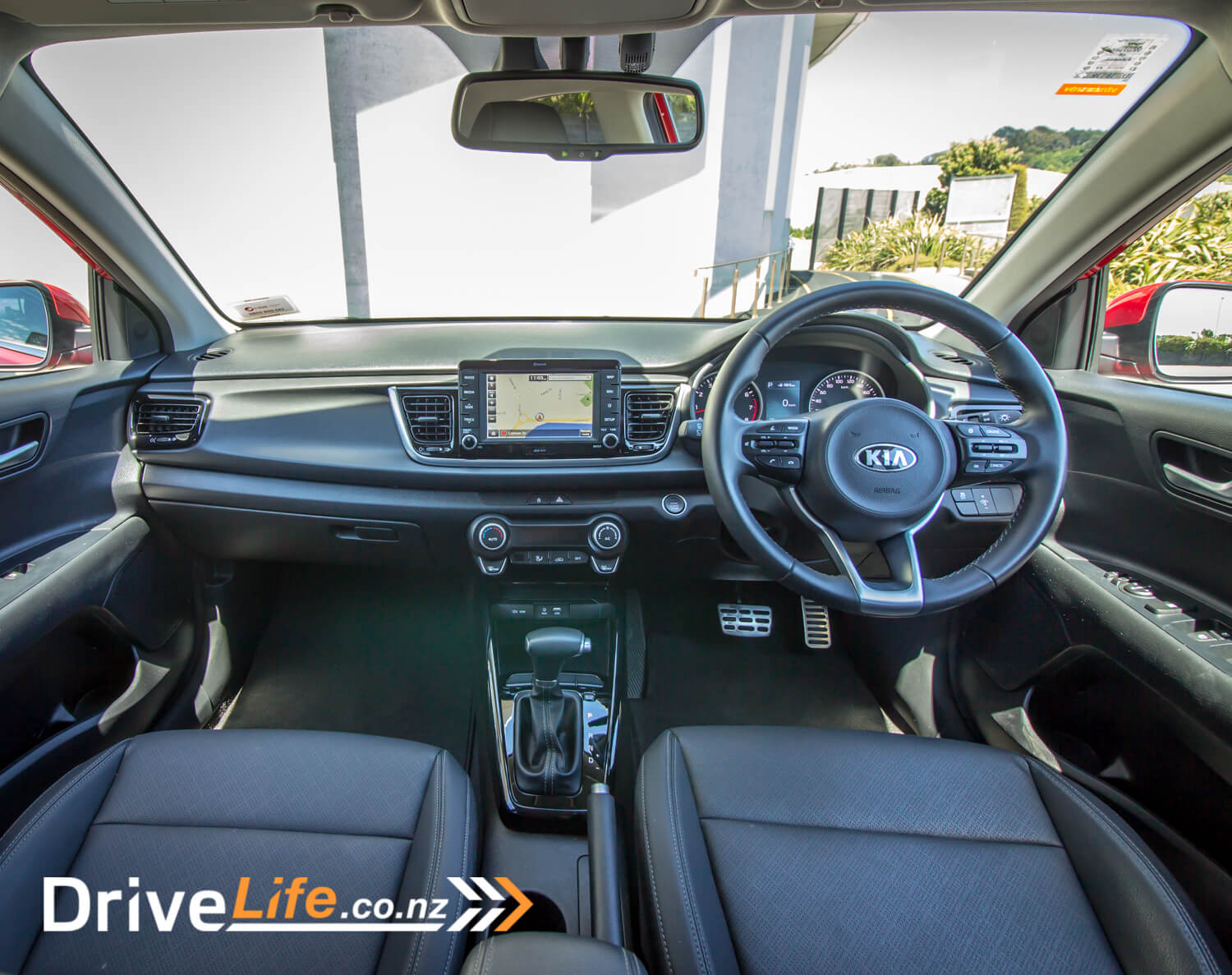
The new dashboard includes a ‘floating’ touchscreen’. I think Kia might have got confused here between ‘floating’ and ‘looks like an afterthought’. It is mostly integrated into the dash though, so I’d not give it a title of floating, as they have.
There is a single USB port up the front on the centre console, as well as an AUX port next to it. Just below these are four blank plates – unexpected in the top-of-the-line model, I felt. There’s also another couple of blanks to the right of the steering wheel.
Speaking of the steering wheel, it was great to get into a budget-range car where the controls work perfectly. There are 12 buttons on the wheel, which give you 17 different operations – and they work well. There’s almost never a need to look down to change the channel or volume, your fingers fall to the controls instantly. The leather composite wheel has a great feel to it as well, and makes the car feel like it’s worth more than it actually is.
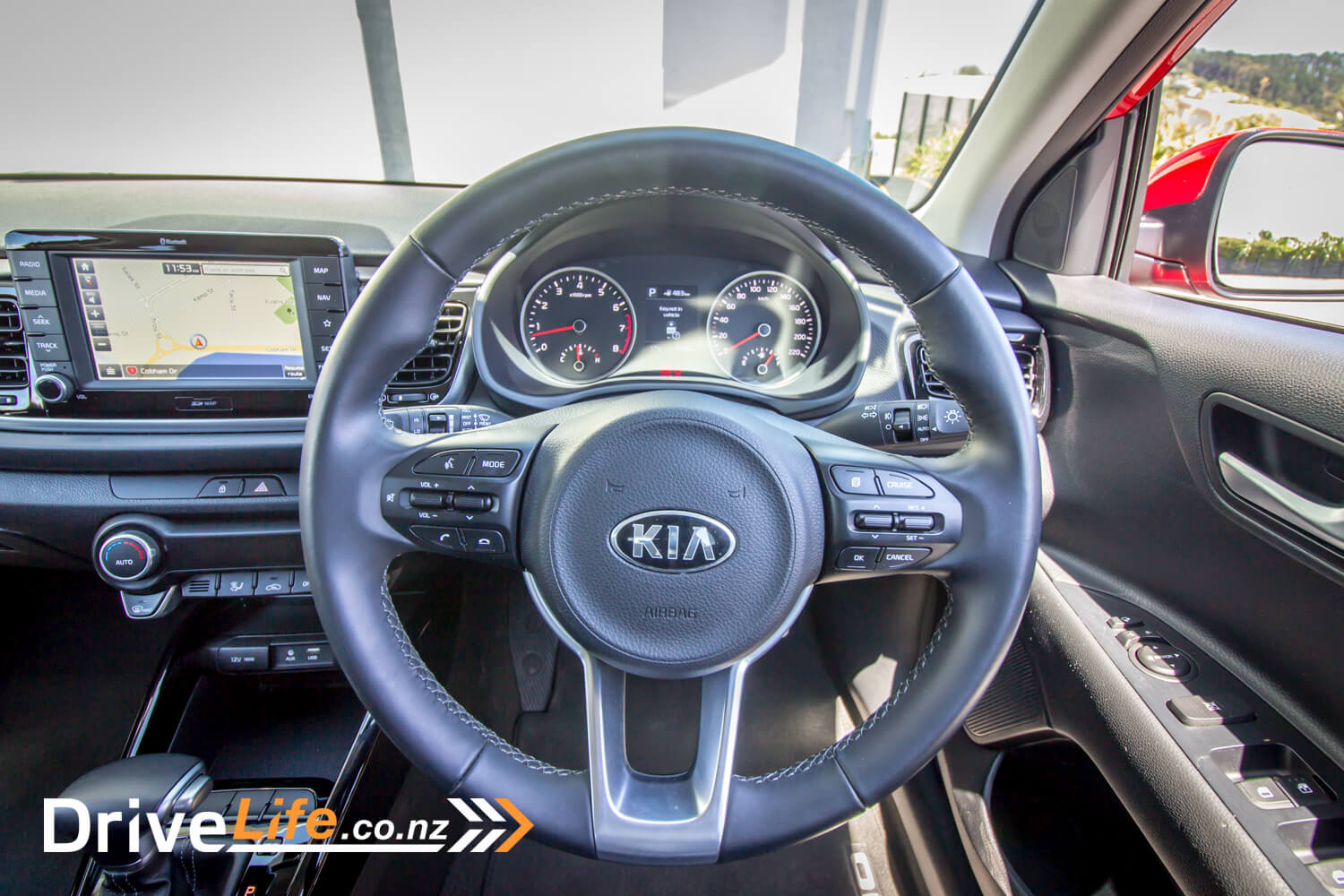
The new colour touchscreen has great resolution – I couldn’t find what it was, but crystal clear is a good enough description. The menu system is a mix of hard buttons and using the touchscreen for the infotainment system – and these are so easy and intuitive, within minutes you are an Infotainment Ninja.
It did have a few annoyances, like the Bluetooth connection not re-connecting most of the time after getting back into the car – it would revert to radio, and you need to manually change it back to Media. This is standard Kia fare, and still so annoying.
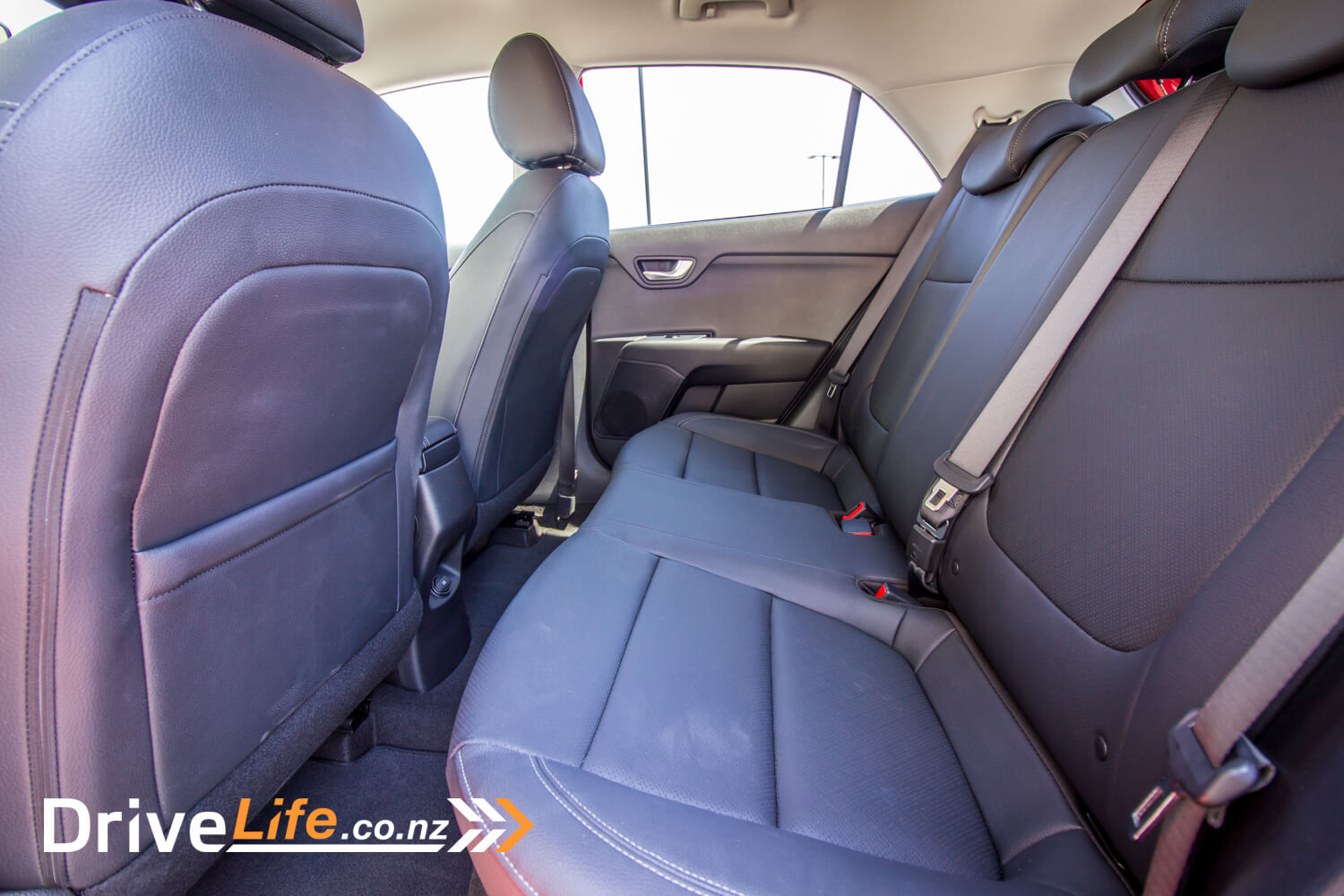
Also, when using Bluetooth to listen to music, there’s no option to browse folders or tracks, so it’s track up/down only from the steering wheel or touchscreen. Lastly I found that if it did reconnect to my phone, tracks wouldn’t automatically play, and still wouldn’t play if I hit the Play button on the touchscreen. I had to get my phone out of my pocket and manually play a track or start a playlist.
I liked that there’s a hard button labelled ‘favourite’ and you can set it to whatever you want via the Settings menu, which was a handy feature to have. The audio system is pretty reasonable; not outstanding, but certainly is up to the job. I can see the front USB and AUX port being hammered by the kids.
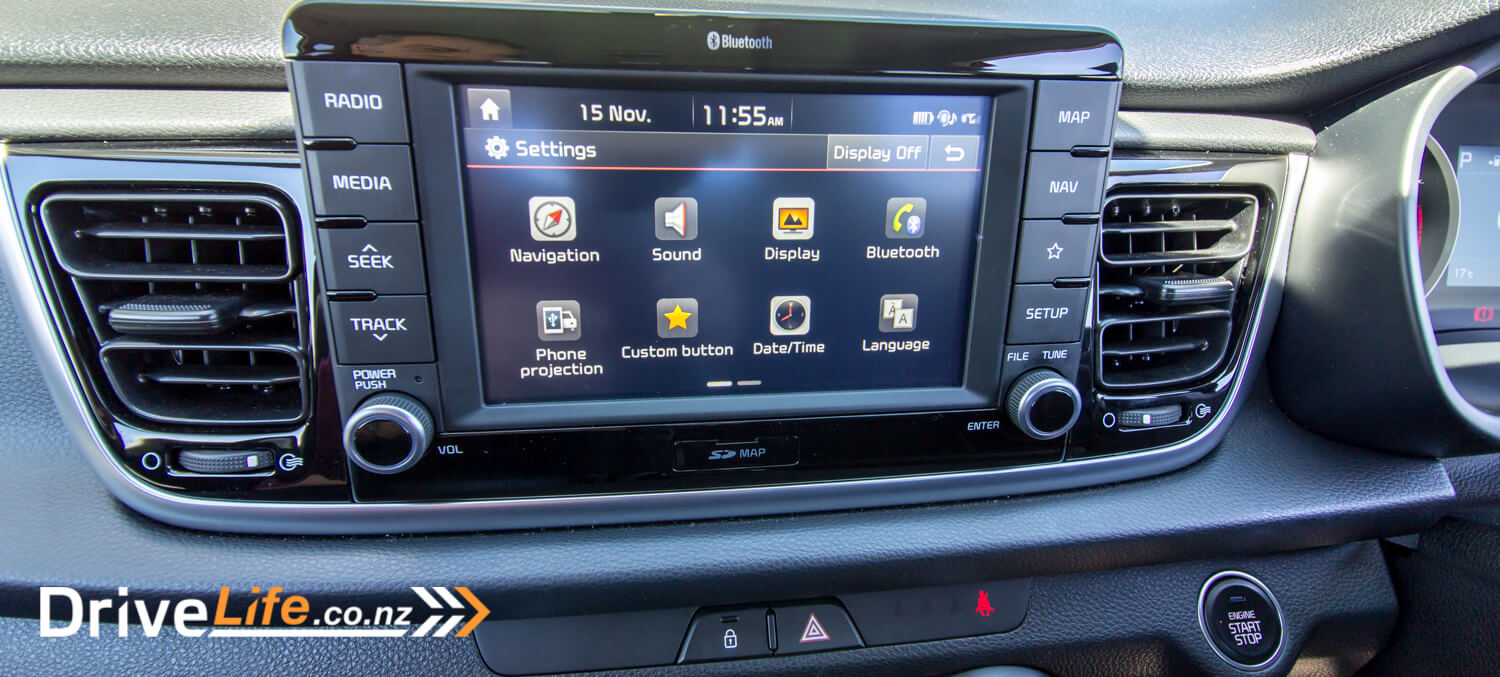
All seats in the Rio are extremely comfy – just the right amount of padding, and the support is more than acceptable. I think even on a long trip they would be just fine. Rear-seat passengers also get their own USB charging port.
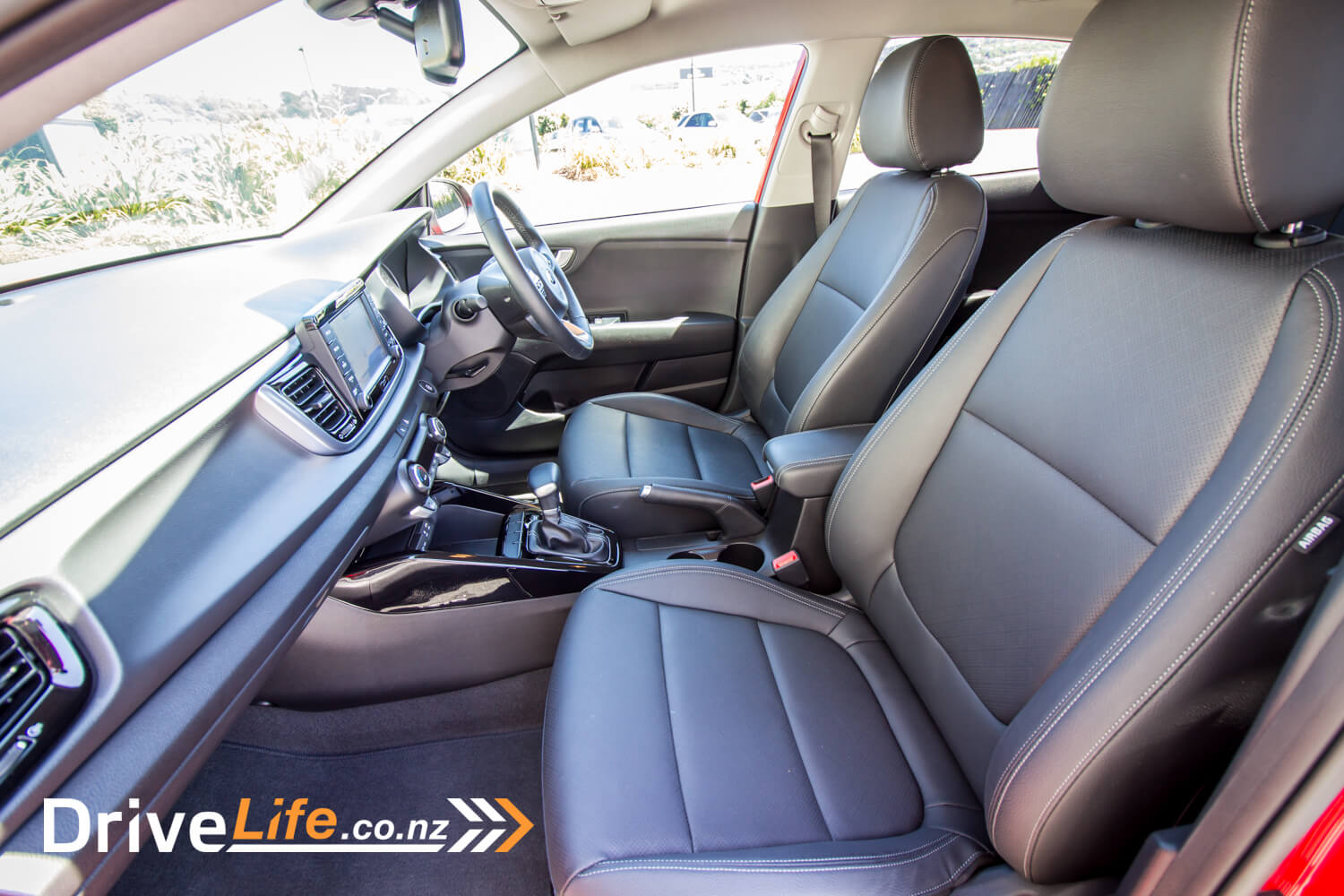
At 325 litres with the seats up, the boot has plenty of usable space. This is up 37 litres over the previous model, and Kia claims it’ “among the best in class.” With the seats down, you now get 980 litres of space – very decent and I expect much appreciated in this class of car.
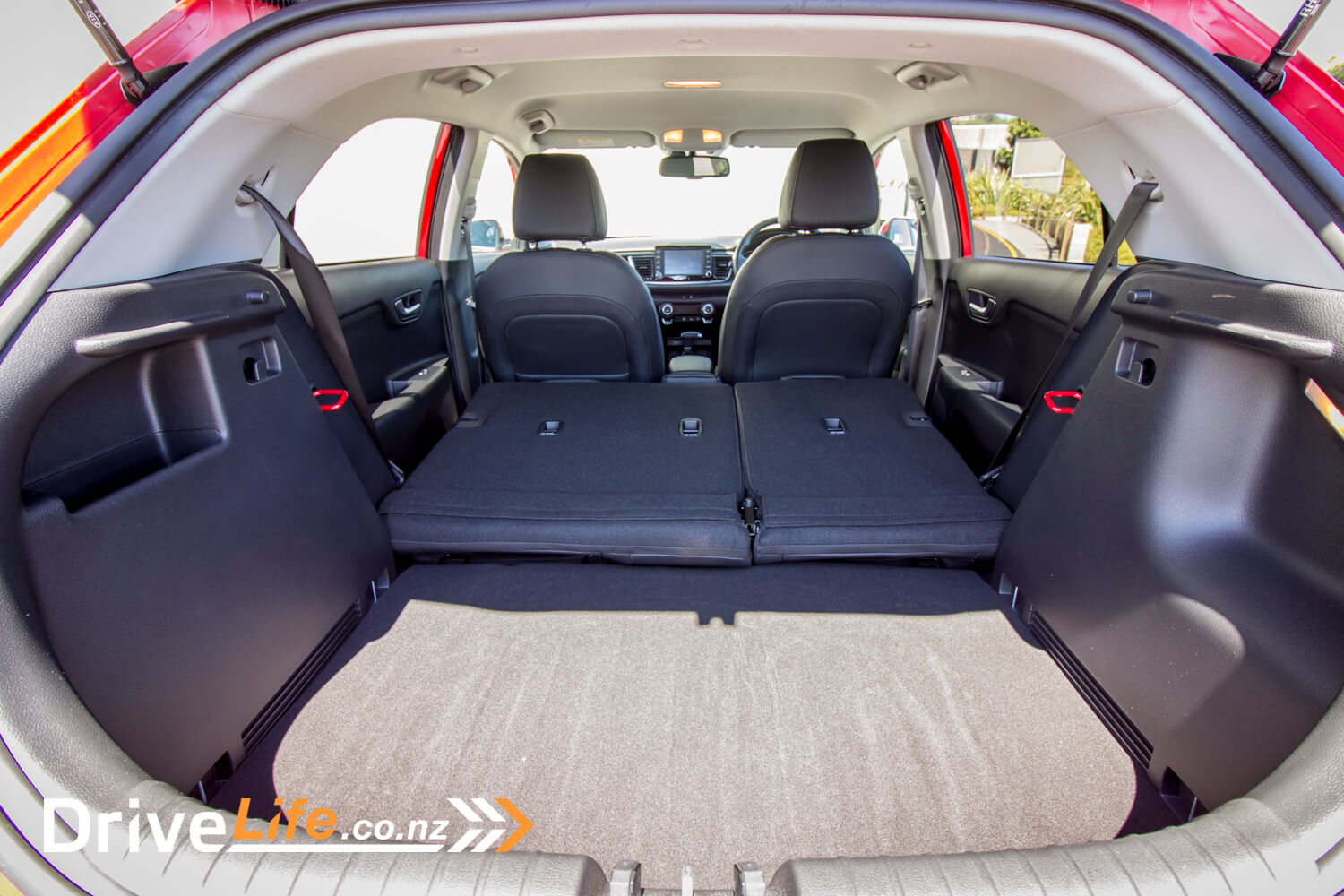
The Drive
Great to see keyless entry and start in this model, something we almost take for granted now.
On driving, I appreciated that the Satnav is nice and clear, and so easy to use. A great safety feature, is that when coming up to a school you get a verbal warning: “Children crossing ahead”.
You also get the verbal warnings for merging lanes on the motorways, railway crossings and other potential hazards. You can also turn these off or on in turn, and you don’t even need to be using SatNav for these – they occur when simply driving the car. I did turn off the lane merge one, it got a little annoying but this could be a great selling point for new drivers.
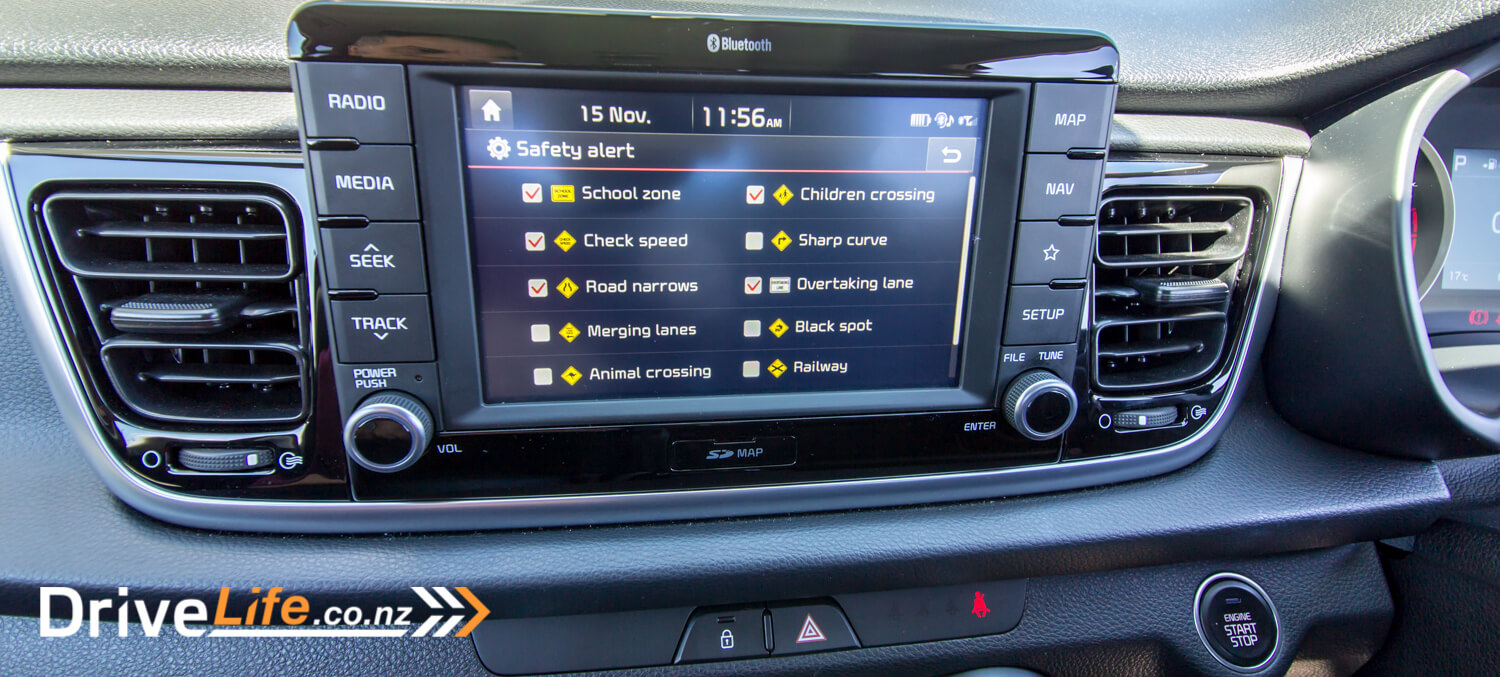
When using for the GPS, there’s a split screen if you want, with next three direction changes shown. You don’t often see this in this price bracket.
The speed limit for the road you are on is shown on the SatNav display (if you have it up) and this is always appreciated. I only wish that all manufacturers would show the same info right in front of the driver on the driver’s info display – that’s where it needs to be, more than anywhere.
It seems half the manufacturers do this, and the other half do not. It was good that the Rio has a digital speedo option in the driver’s display – always needed and appreciated.
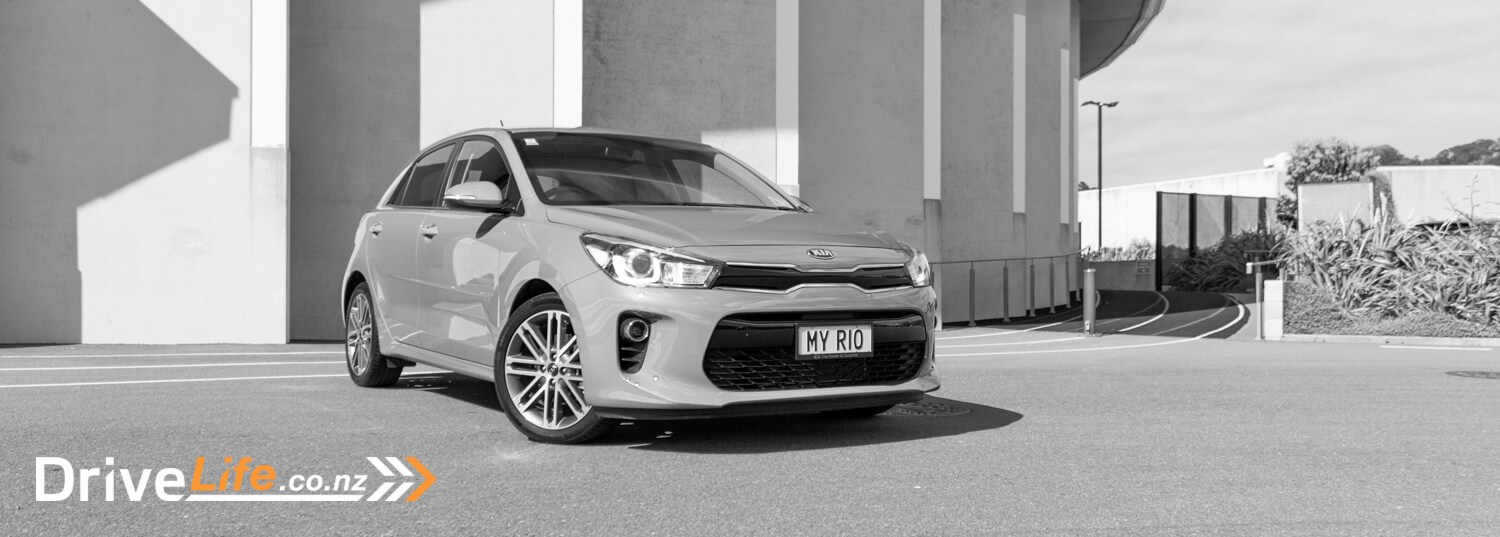
A shame though that in this top-spec car, there’s no adaptive cruise control. The Swift has it all over the Rio here. At least the controls are simple to use, along with the others on the steering wheel.
The Rio is a competent handling car – for most drivers, it will do the daily grind as well as handle some twisty roads with no drama. Apparently the suspension is tuned for New Zealand roads, and it sure shows. There’s little steering feedback, but enough that you know what’s happening in the front.
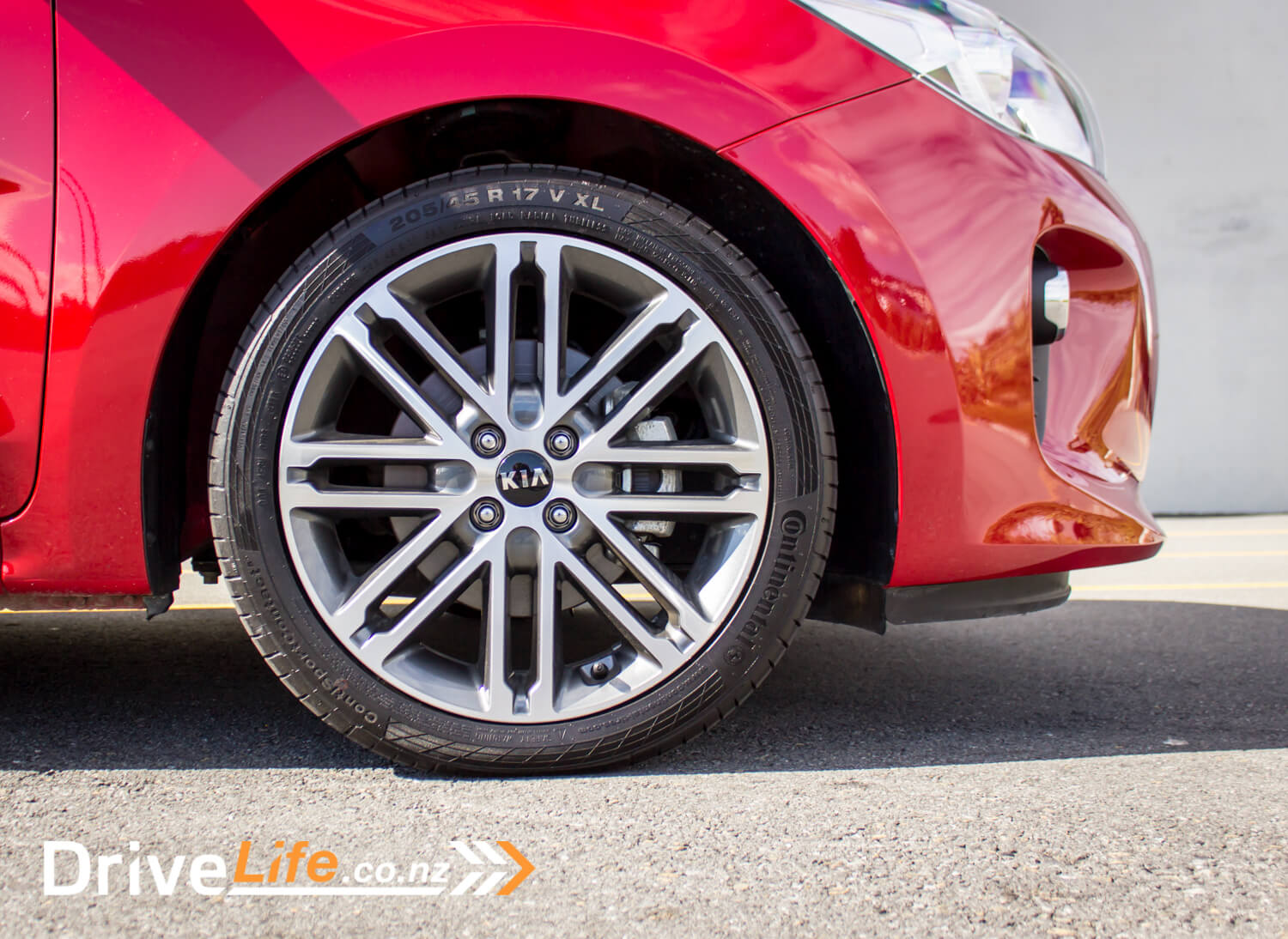
The ride mostly very good for a small car, but some bumps brings sharp jolts. It was a little Jekyll and Hyde here – I’d be driving along, going over bumps and thinking just how well it rides, and then a wheel would hit a pothole and there’d be a loud crashing sound. Still, it’s better overall than some small cars.
Road and tyre noise is mostly well damped, no doubt helped by the Continental tyres. Coarse-chip seal will leave you with a bit of a roar, but in this size of car that’s hard to get rid of.
I’ve been quite positive on the above points, as a bait and switch for the bad news; this car is so under-powered. A 74Kw engine + 4-speed auto = extremely slow progress. Here lies the Achilles Heel of the Rio Limited: it borders on frustrating. Even only with the driver on board, any hill will see second gear, and sometimes a change down into first, when it screams its guts out. The Rio brochure says the engine is “powerful yet gentle”. Hmmm.
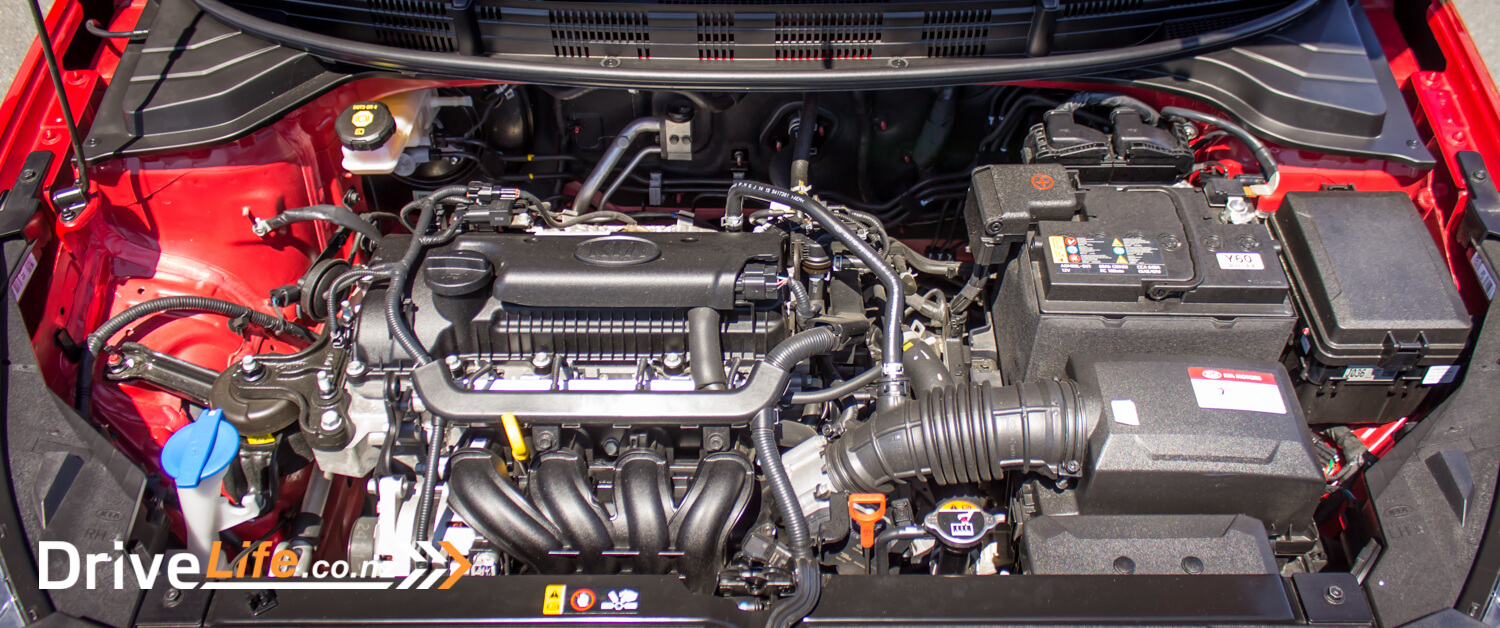
Even if you manage to stay in second gear, a hill will see it struggle to accelerate at all, and normally the same slow speed is what you get. Sometimes it felt like I was losing speed on hills, as it just couldn’t cope. I kept checking the handbrake to make sure I hadn’t left it on – that’s the effect. At that point I’d nail the accelerator pedal and wait for first gear, and engine noise. OMG this car needs a 6-speed auto box – or downgrade to the base model and stick to the manual.
If you live in a totally flat city, it might be okay – if there are no motorways. If you end up on the motorway, changes down to third when accelerating are normal, and I saw second gear a few times when changing lanes to pass.
Visibility is better than the previous model of Rio – the C pillars are thinner and more upright. In day to day driving, this is an easy car to see all around.
My fuel economy for my week with the car was 8.2L/100km. A little high for a normally-aspirated 1.4 four-cylinder, but most of this was around town and with the low power of the engine, it does seem to be trying hard constantly to keep up with traffic. I guess I’m saying that there’s no surprises here with the fuel consumption.

The Competition
| Brand/Model | Engine | Power/Torque | Fuel, L/100km | Cargo capacity, seats up, litres | Price – High to Low |
| Volkswagen Polo TSI | 1.2-litre, 4-cylinder turbo petrol | 66Kw/160Nm | 4.7 | 280 | $28,990 |
| Toyota Yaris ZR | 1.5-litre, 4-cylinder petrol | 80Kw/141Nm | 6.4 | 347 | $28,590 |
| Ford Fiesta Sport | 1.0-litre, 3-cylinder turbo petrol | 92Kw/170Nm | 5.3 | 290 | $28,840 |
| Skoda Fabia TSI | 1.2-litre, 4-cylinder turbo petrol | 81Kw/175Nm | 4.7 | 310 | $27,990 |
| Kia Rio | 1.4-litre 4-cylinder petrol | 74Kw/133Nm | 6.2 | 325 | $26,990 |
| Hyundai i20 | 1.4-litre 4-cylinder petrol | 74Kw/133Nm | 6.7 | 326 | $26,990 |
| Mazda2 GSX | 1.5-litre, 4-cylinder petrol | 81K1/141Nm | 4.9 | 250 | $26,545 |
| Holden Barina LT | 1.6-litre, 4-cylinder petrol | 85Kw/155Nm | 7.2 | n/a | $26,490 |
| Suzuki Swift RS | 1.0-litre, 3-cylinder turbo petrol | 82Kw/160Nm | 5.1 | 242 | $25,990 |
The Pros and Cons
| Pros | Cons |
|
|
What do we think of it?
Such a lost opportunity. It’s got the looks, great build quality and a nice interior. But then you drive it. It reminded me of the Hyundai i20 Cross – another great looking car, let down by the exact same engine and transmission.
The thing is, the Rio is over 400Kg heavier (!) than the i20 Cross, so that 74Kw and 4-speed auto are never going to do it.
For an elderly driver that never takes passengers, the Rio could be a great car. Load it up though, and it’s going to struggle. Ditto living in a hilly area.
Come on Kia, you can do better than this.

3.5 chevrons
| Vehicle Type | Small hatchback |
| Starting Price | $22,490 |
| As tested Price | $26,990 |
| Engine | 1.4-litre 4-cylinder petrol |
| Transmission | 4-speed automatic |
| Kerb Weight, Kg | 1,165 |
| Length x Width x Height, mm | 4065x1725x1450 |
| Cargo Capacity, litres | 325 litres seats up
980 litres seats down |
| Fuel Tank, litres | 45 |
| Fuel Economy | Manufacturer’s rating, combined: 6.2 L/100Km
Real World: 8.2 L/100Km |
| ANCAP Safety Ratings | 5 Stars |
| Warranty | 5-years or 100,000 kilometres
5-years roadside assist |
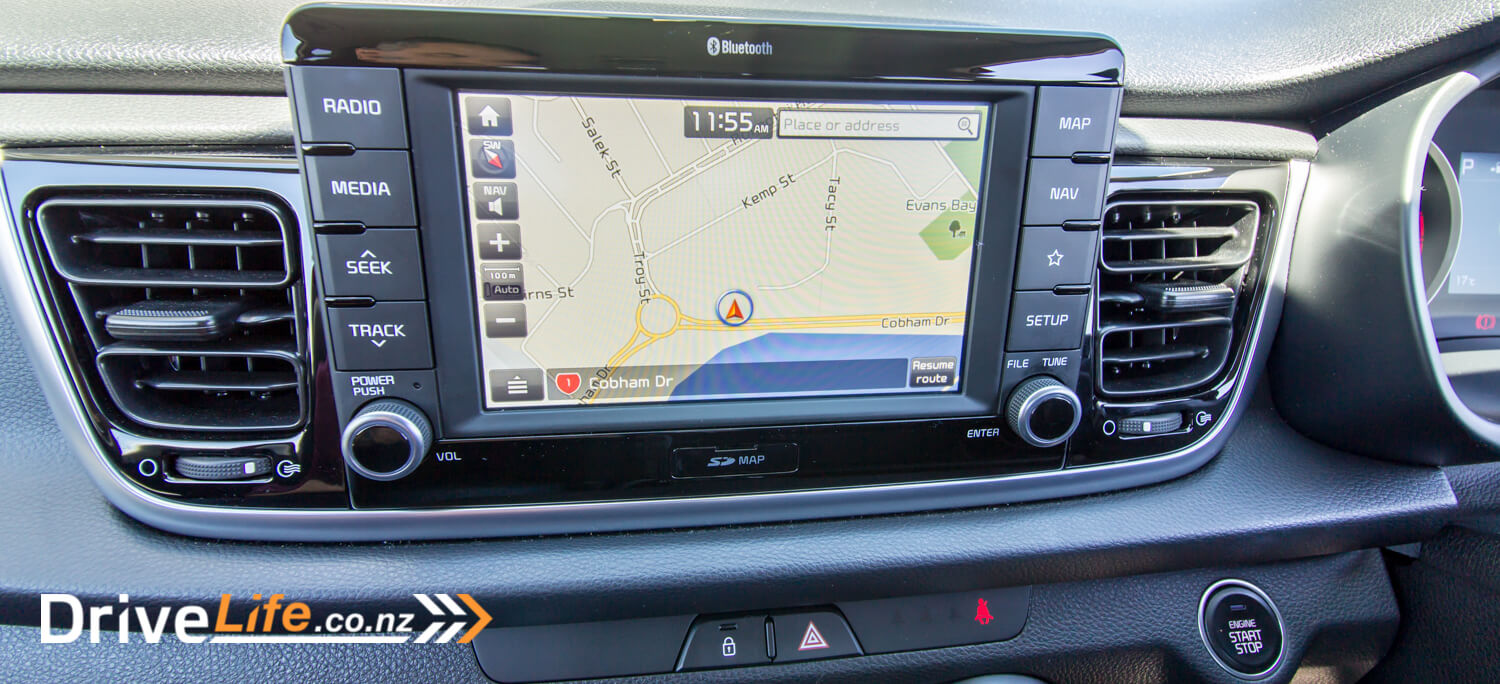
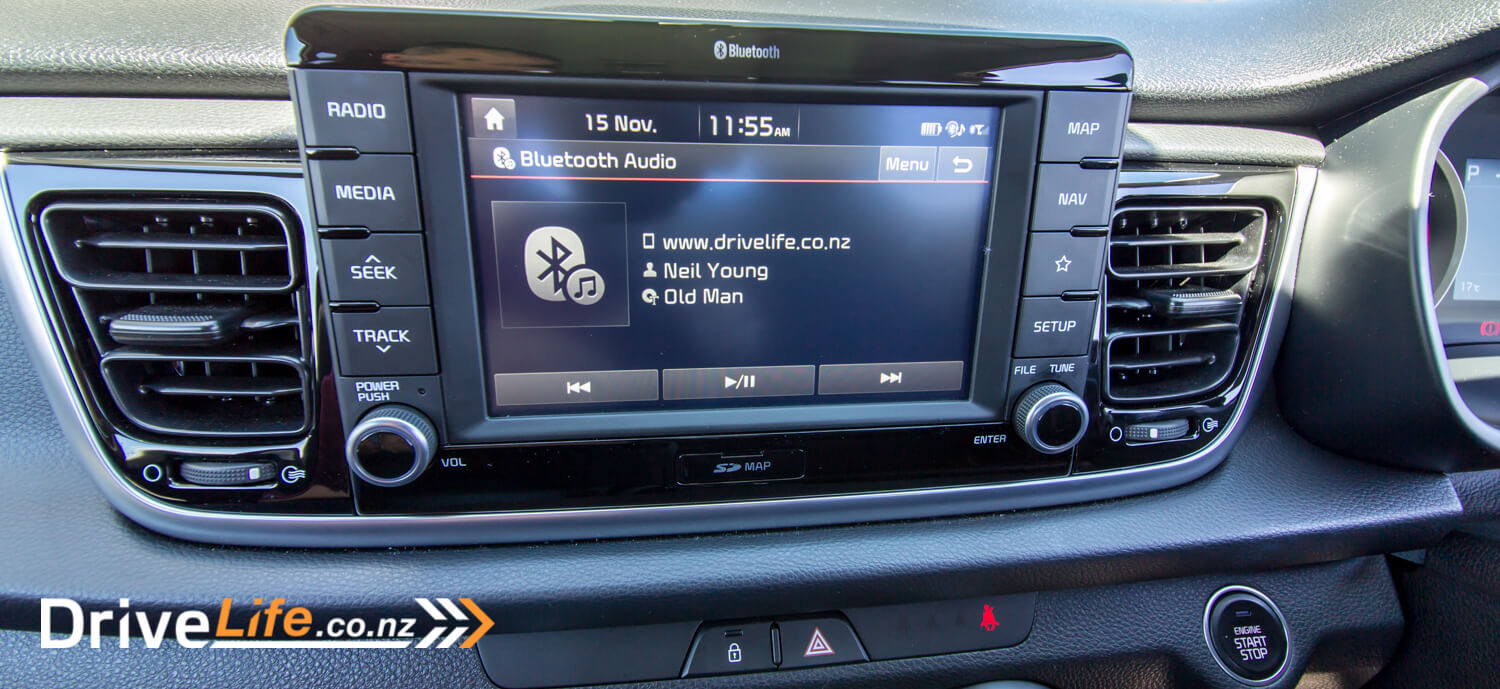
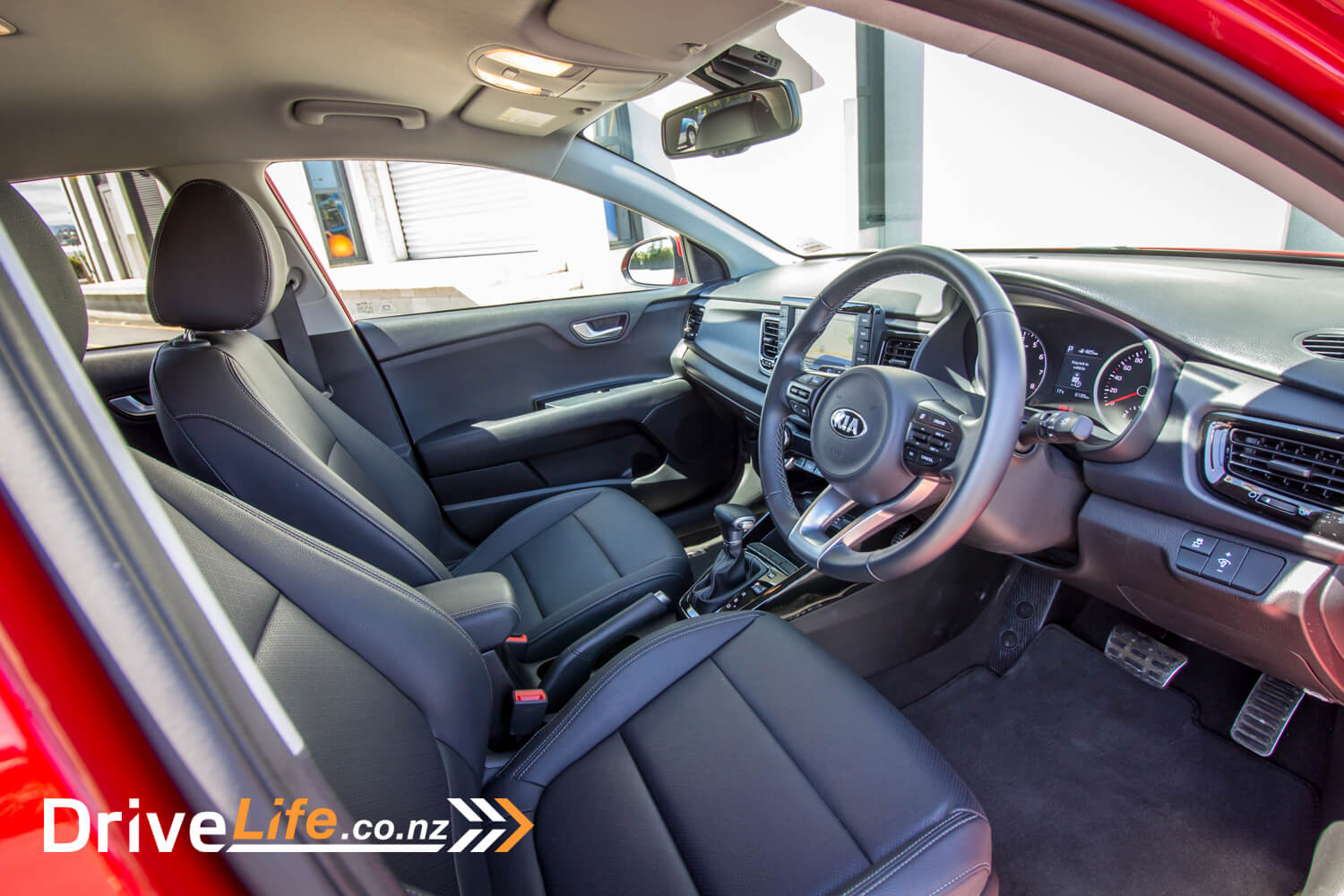
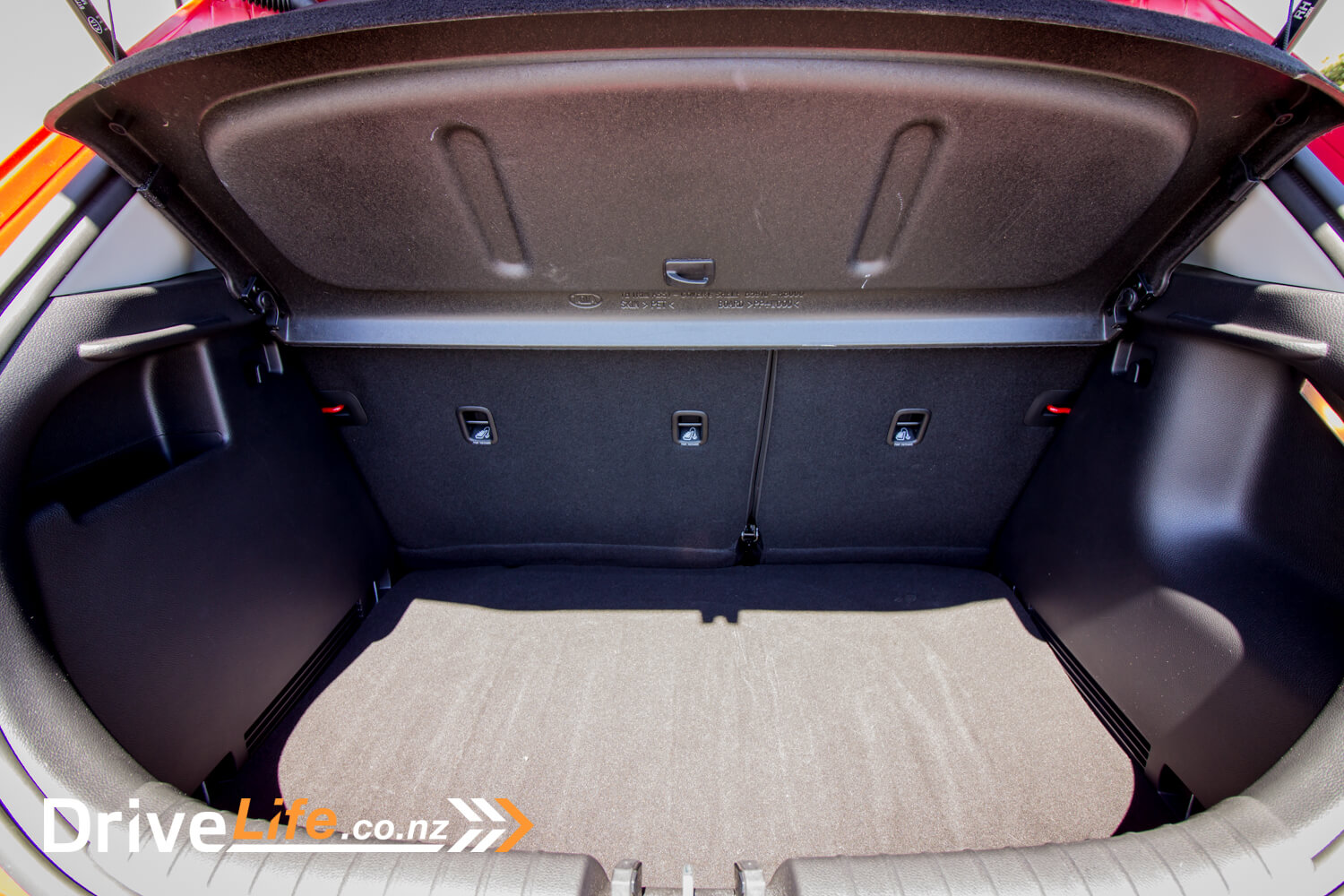
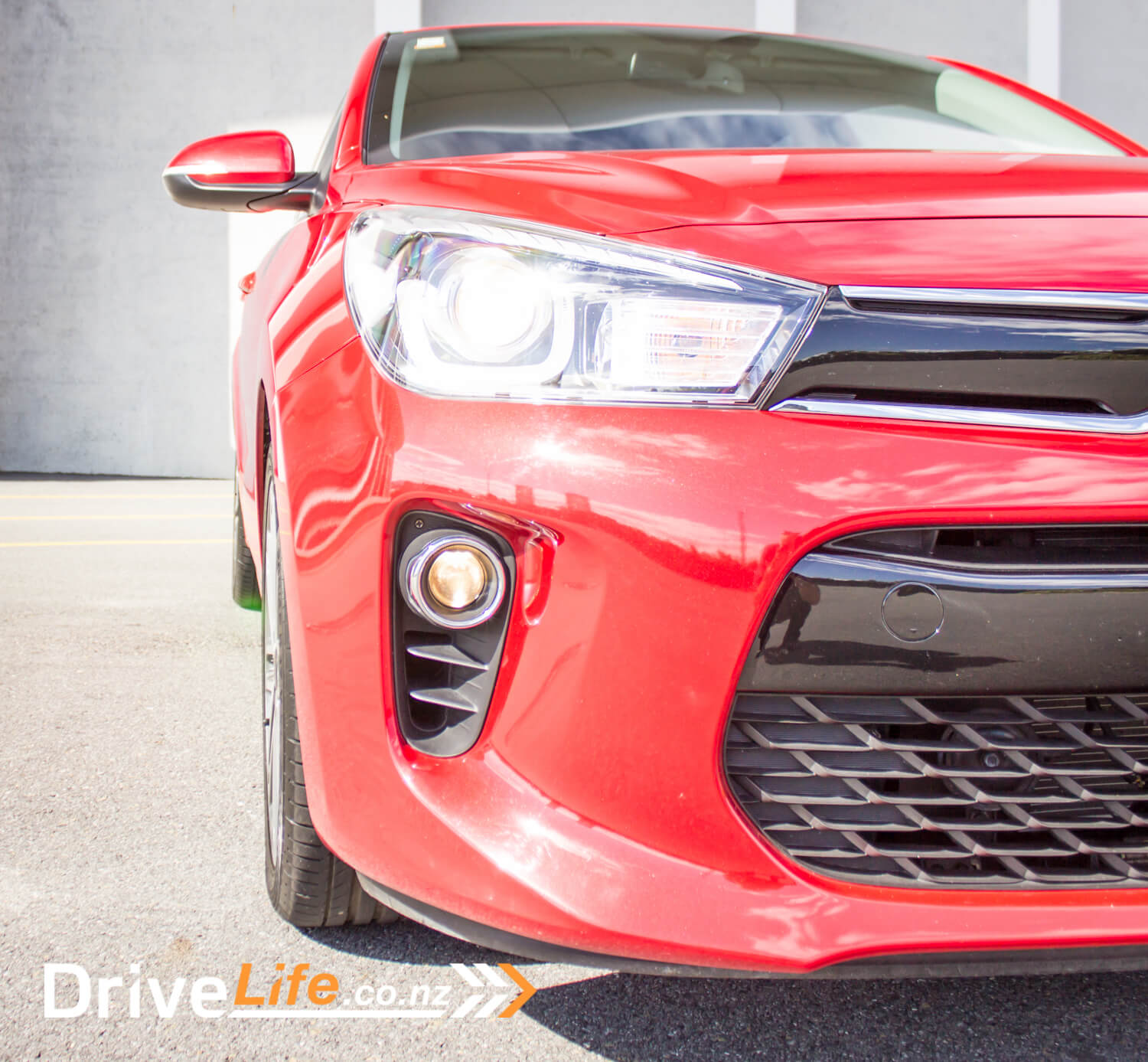
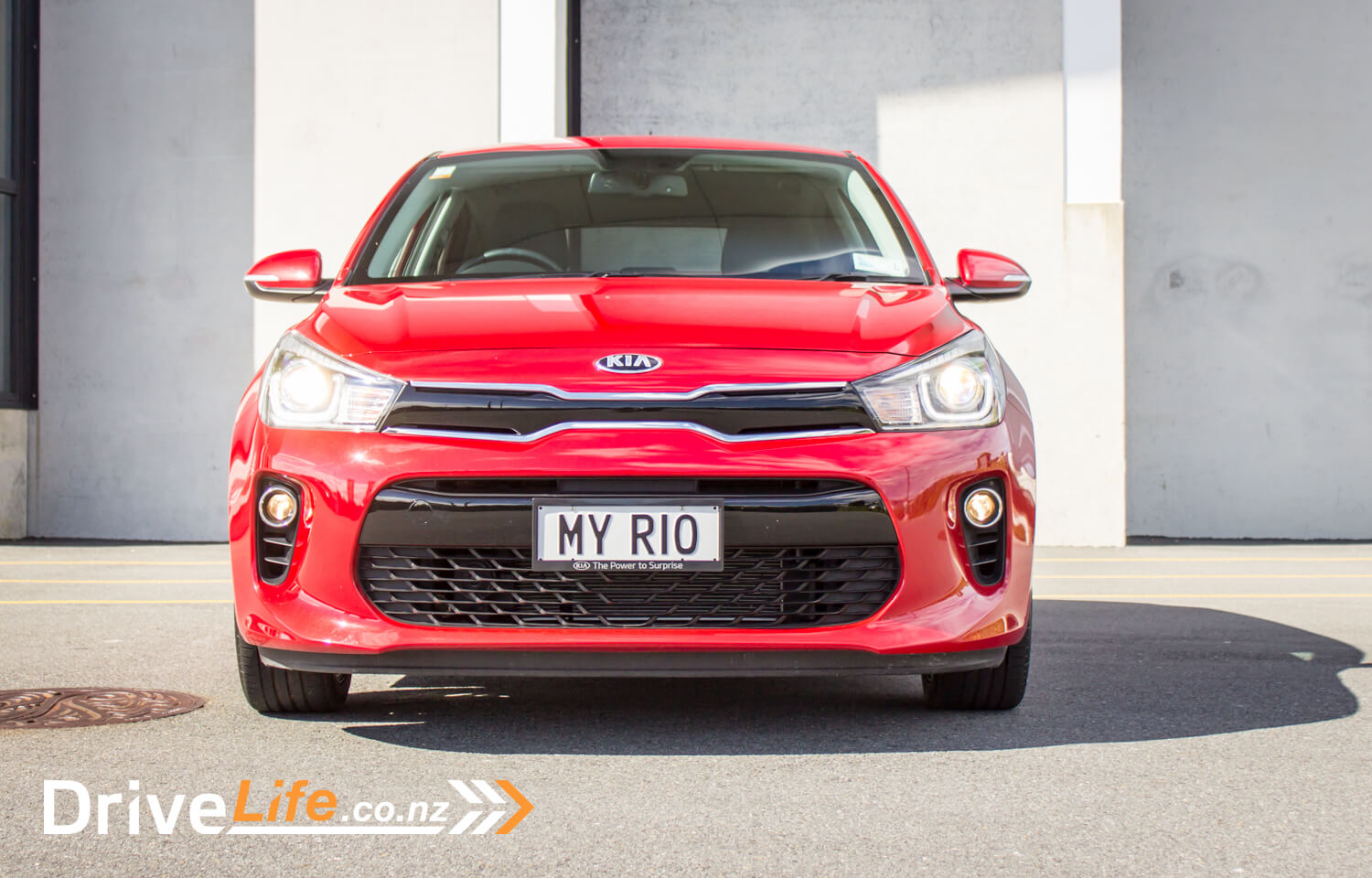

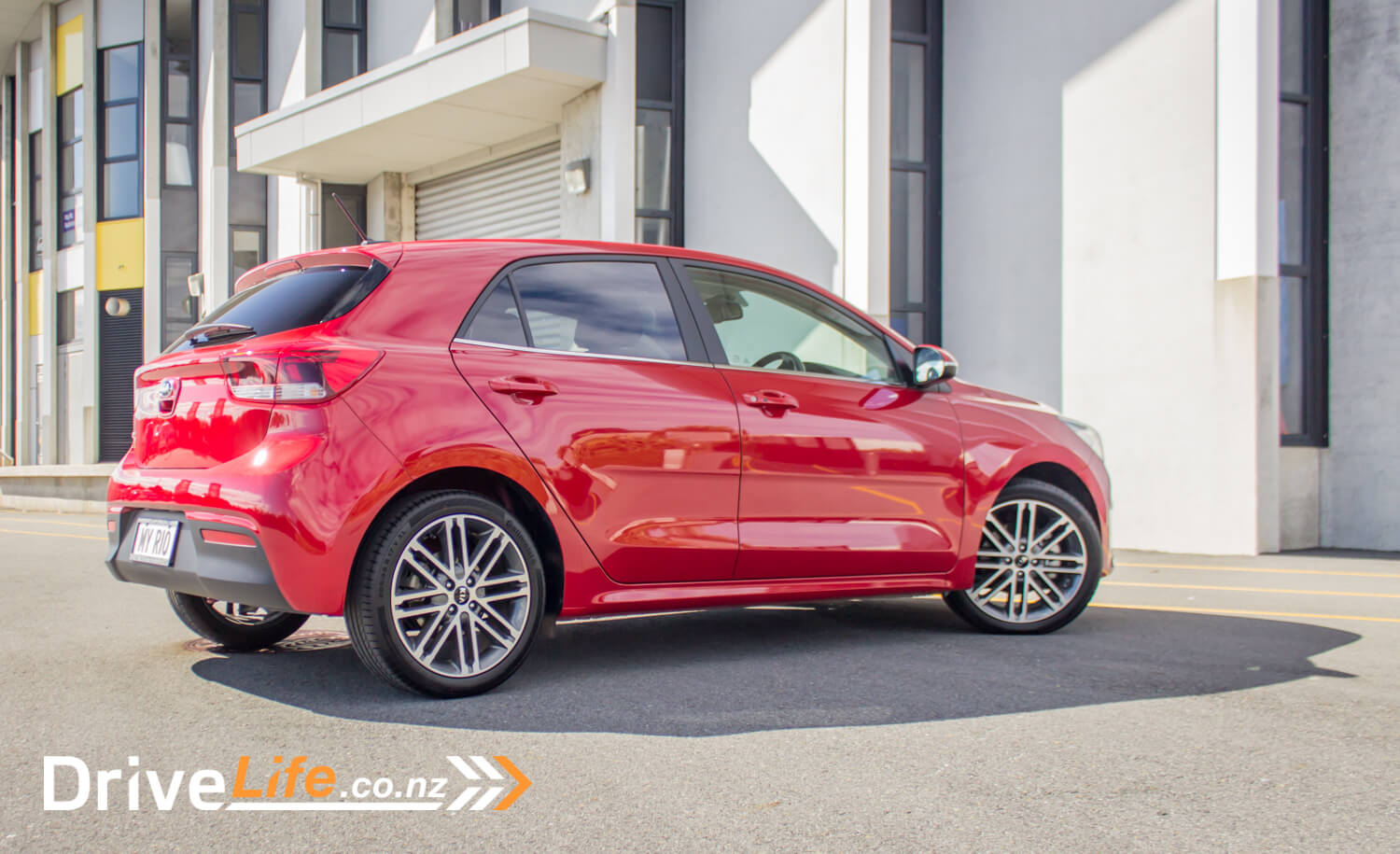
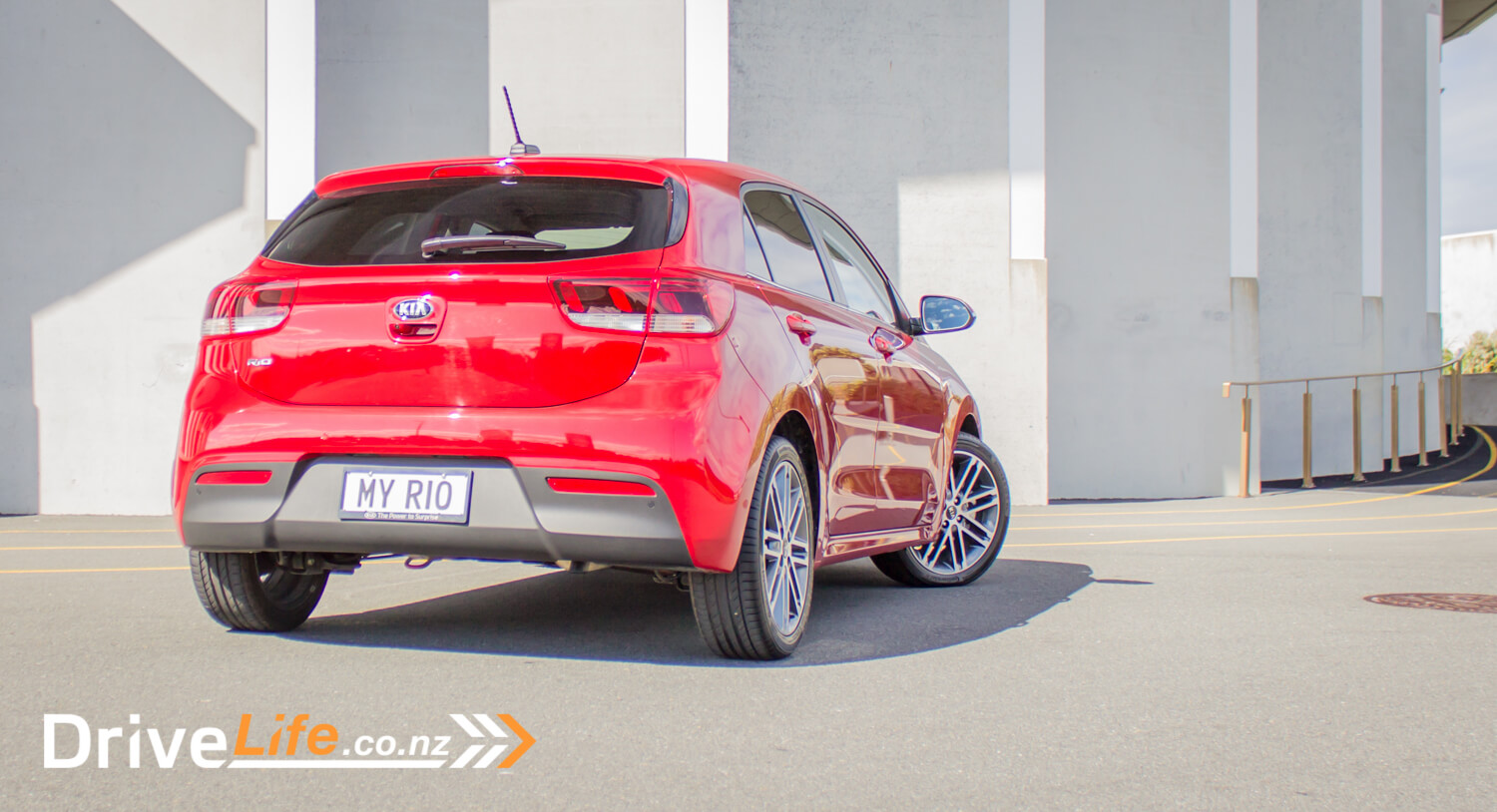

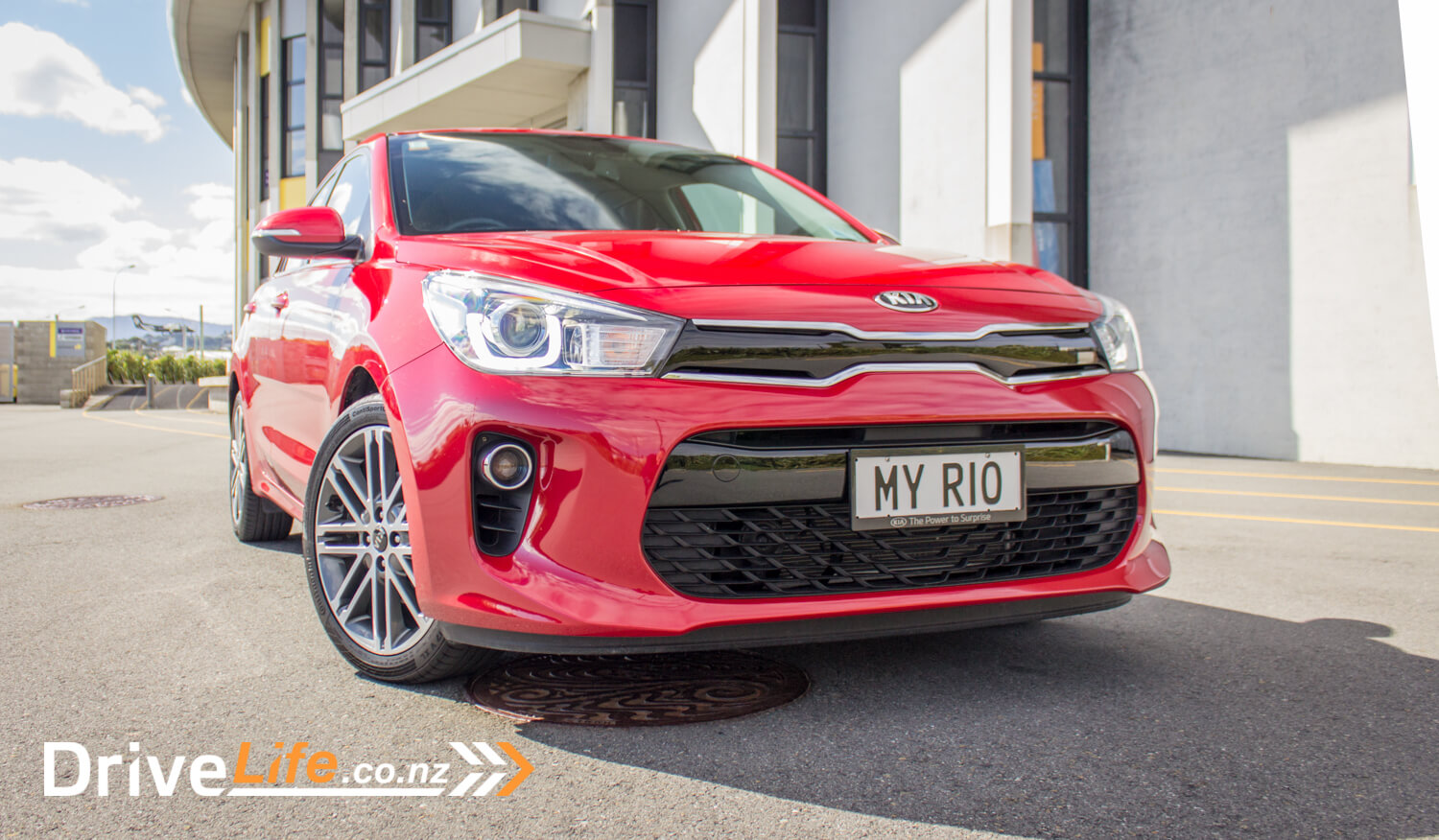



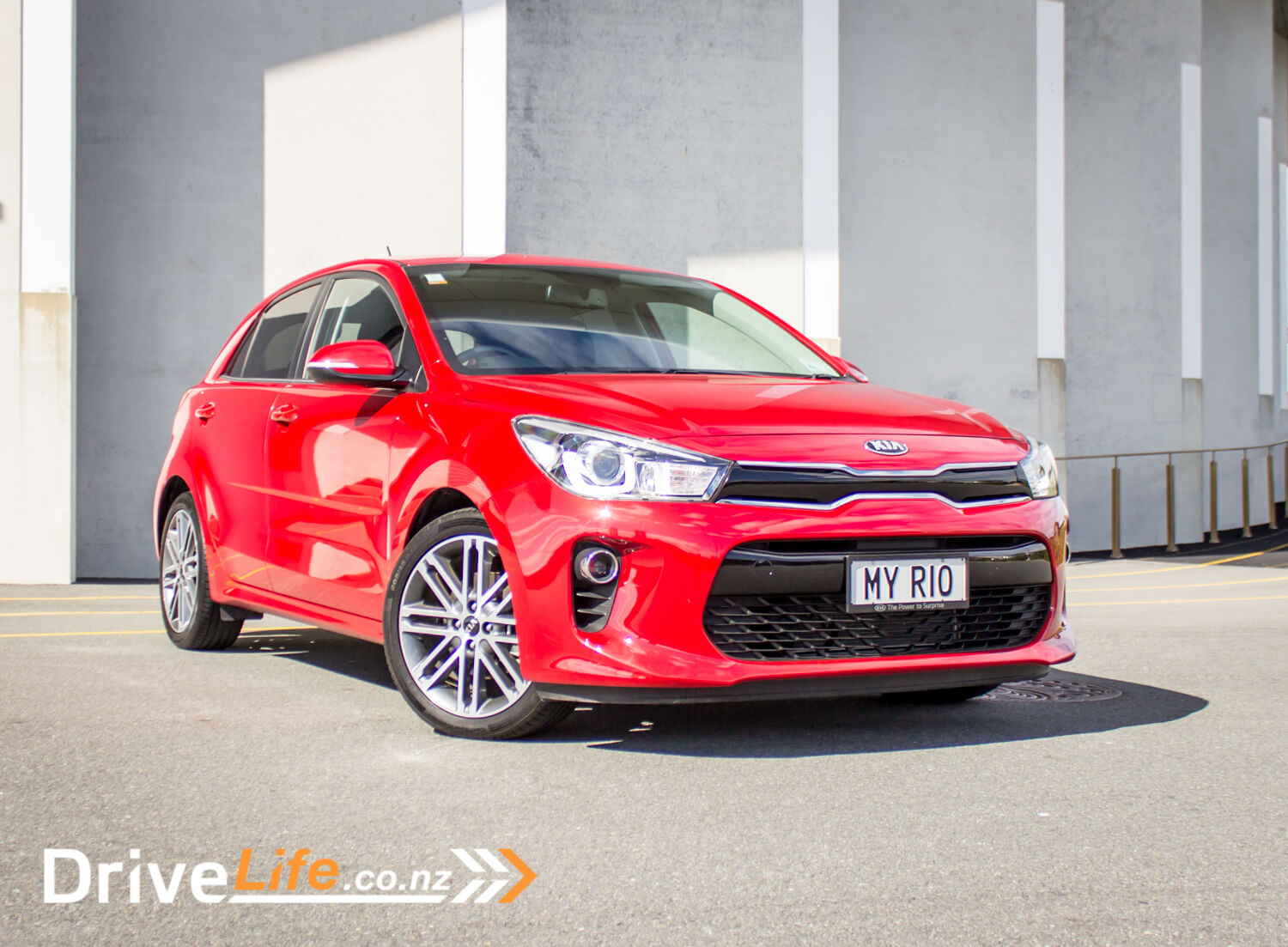











































Shame about the power. I was keen on one second hand for my wife. Great styling and interior. Don’t think she could deal with a manual in Auckland stop start traffic. Great review, thanks.